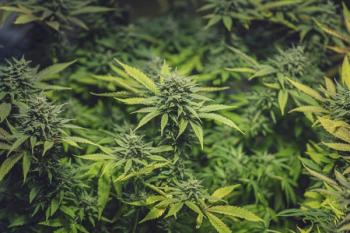
Study Assesses Predictors of OTC Treatment Optimization for Acute Migraine
A study presented at the American Academy of Neurology’s 73rd Annual Meeting aimed to identify predictors of acute treatment optimization in individuals with migraine
OTC medications are widely used for symptom relief in acute migraine; however, many individuals are not optimized on OTC acute treatments, according to the results of a new study.
The study, which was presented at the American Academy of Neurology’s 73rd Annual Meeting held virtually April 17 to 22, 2021, aimed to identify predictors of acute treatment optimization with OTC medications among individuals with migraine.
Study investigators use the Migraine Treatment Optimization Questionnaire-6 (mTOQ-6) to assess acute treatment optimization among 3852 participants. Eligible individuals responded to the 2006 American Migraine Prevalence and Prevention Study survey, were aged 18 and older, met criteria for migraine, had greater than 15 monthly headache days, did not take prescription medication for migraine medication for migraine, and use 1 or more of the following acute migraine medications: acetaminophen, aspirin, non-steroidal anti-inflammatory medications, or caffeine combination products.
In assessing pain freedom and relief, adequate 2-hour pain freedom (2hPF) and 24-hours pain relief (24hPR) were defined by a response to treatment greater than or equal to half the time at 2 hours and 24 hours post treatment, respectively. Multivariate logistic regression models identified predictors of response to acute migraine treatment, and predictive models were then used to estimate probability of treatment-response to each class of OTC medications.
Overall, 41.5% and 44.6% of participants reported adequate 2hPF and 24hPR, respectively, according to the data.
Related:
Adequate response to acute treatment was predicted by:
- Lower average headache pain intensity (2hPF, OR=0.83, 95% CI 0.79-0.87; 24hPR, OR=0.85, 95% CI 0.81-0.90)
- Cutaneous allodynia (ASC-12) (2hPF, OR=0.73, 95% CI 0.61-0.87; 24hPR, OR=0.63, 95% CI 0.50-0.76)
- Depression (PHQ-9) (2hPF, OR-0.69, 95% 0.55-0.88; 24hPR, OR=0.57, 95% CI 0.45-0.72)
Additionally, lower migraine symptom severity score (MSSS) was predictive of adequate 2hPF (OR=0.93, 95% CI 0.91-0.96) and fewer monthly headache days was predictive of adequate 24hPR (OR=0.92, 95% CI 0.89-0.94). In patients who reported OTC monotherapy, those taking caffeine combination products were more likely to experience adequate 2hPF (OR=1.55, 95% CI 1.23-1.95) and 24hPR (OR=1.79, 95% CI 1.18-1.88) compared with those taking acetaminophen.
Pharmacists are well positioned to offer
Reference
1. Ezzati A, Fanning K, Buse D, Pavlovic J, et al. Use of predictive modeling to determine treatment-response to OTC medications in acute migraine: Results from the American Migraine Prevalence and Prevention Study (AMPP). Presented at: American Academy of Neurology 73rd Annual Meeting; April 17-22, 2021; Virtual. Accessed April 27, 2021.
Newsletter
Pharmacy practice is always changing. Stay ahead of the curve with the Drug Topics newsletter and get the latest drug information, industry trends, and patient care tips.















































































































